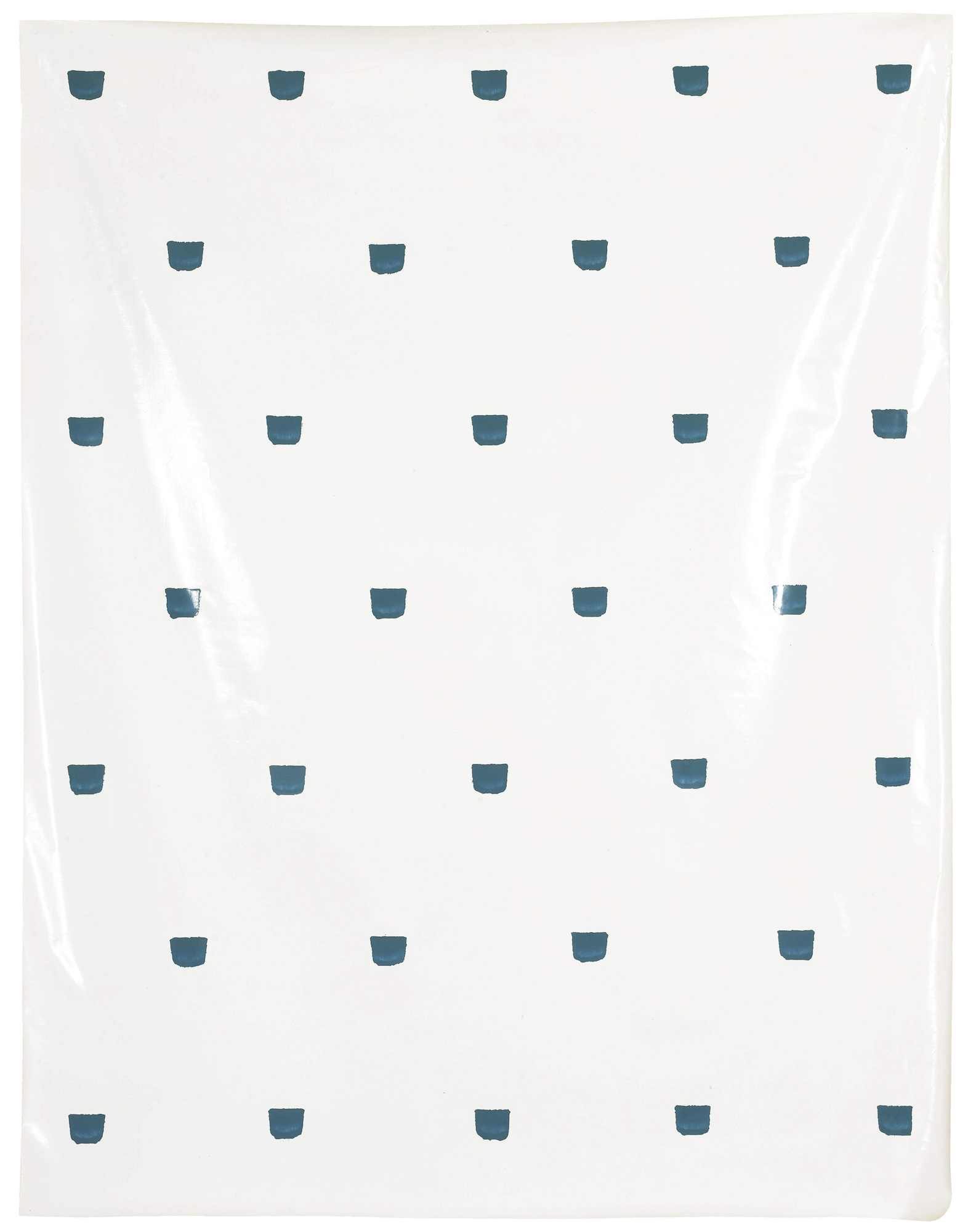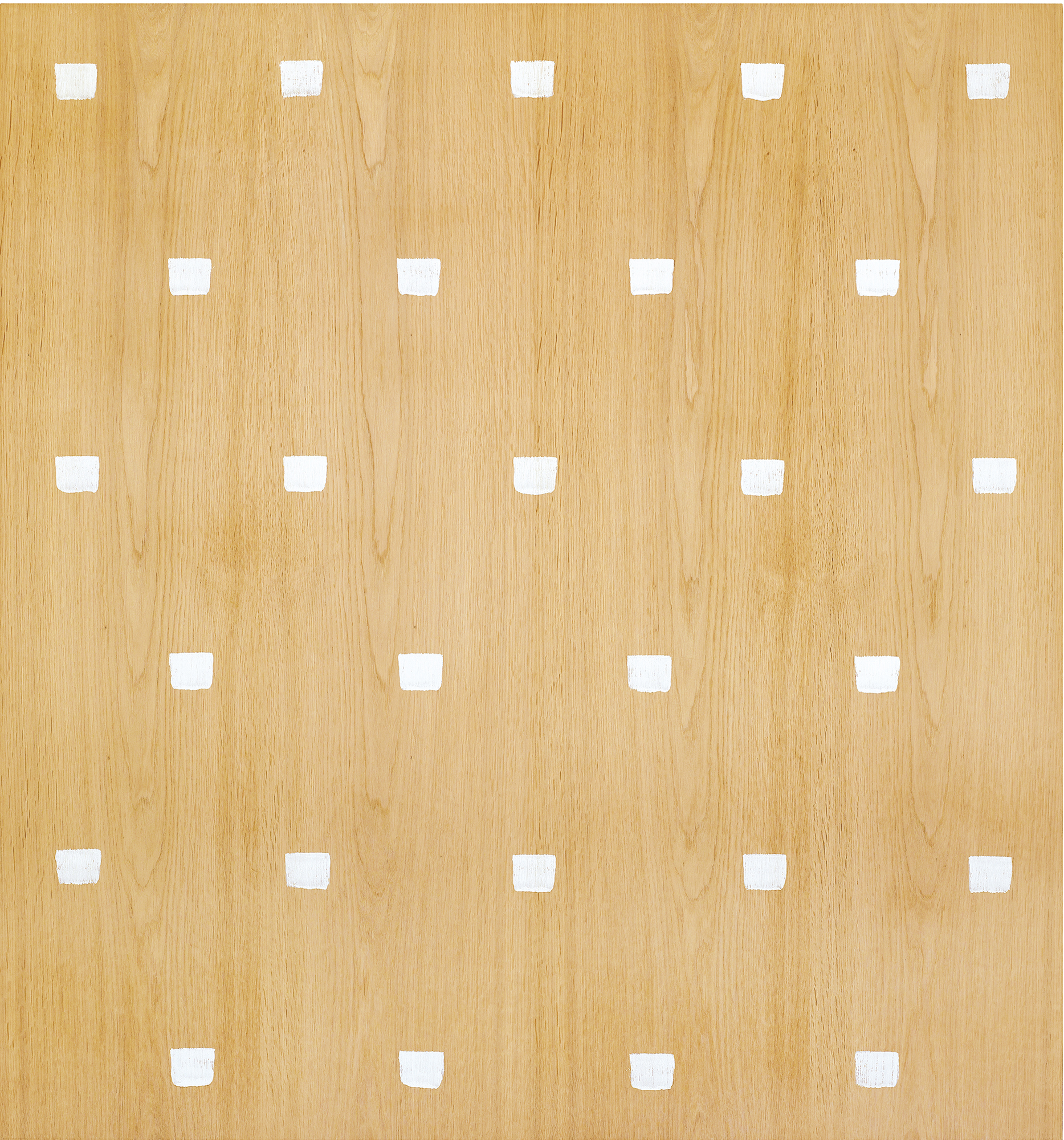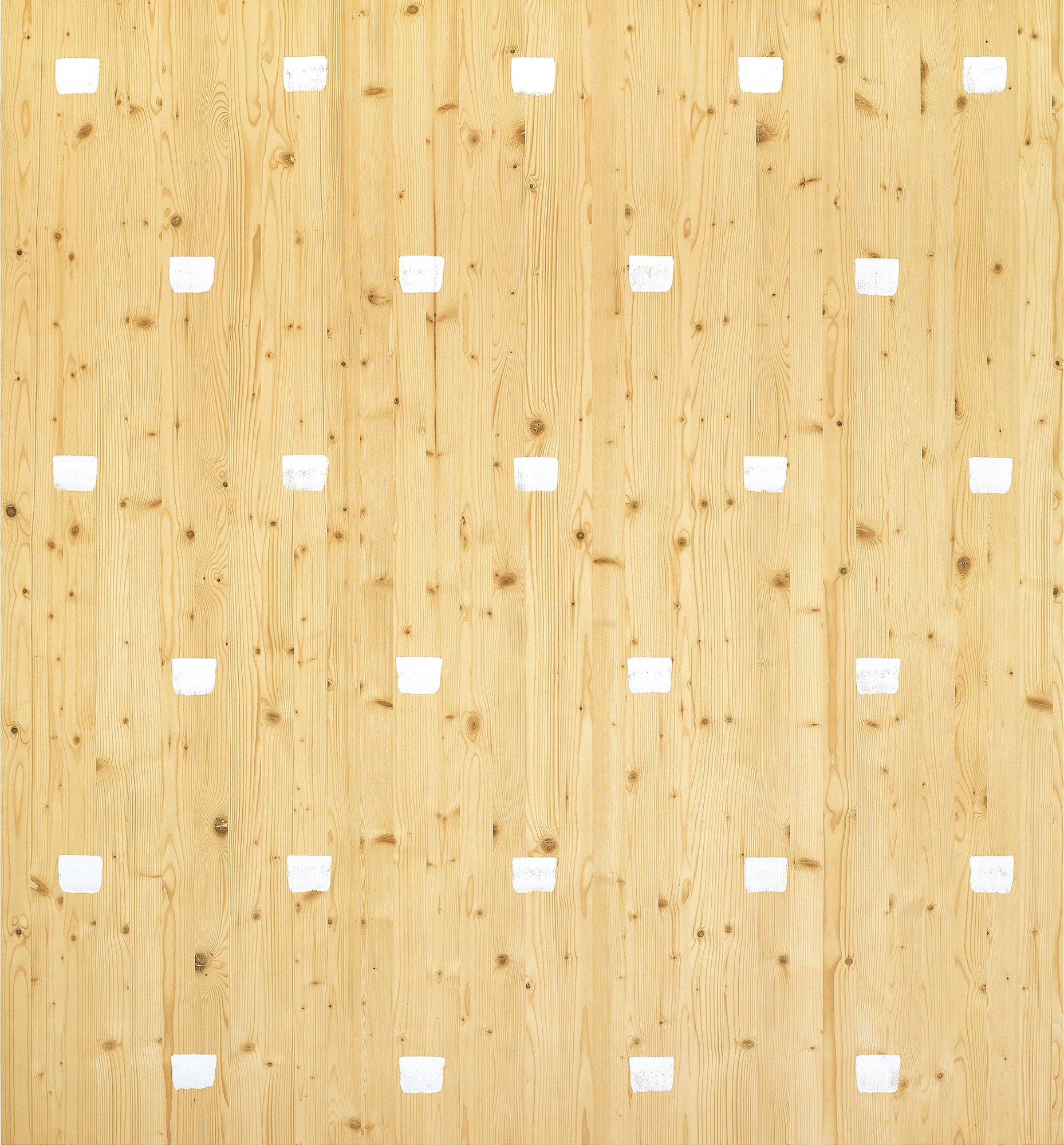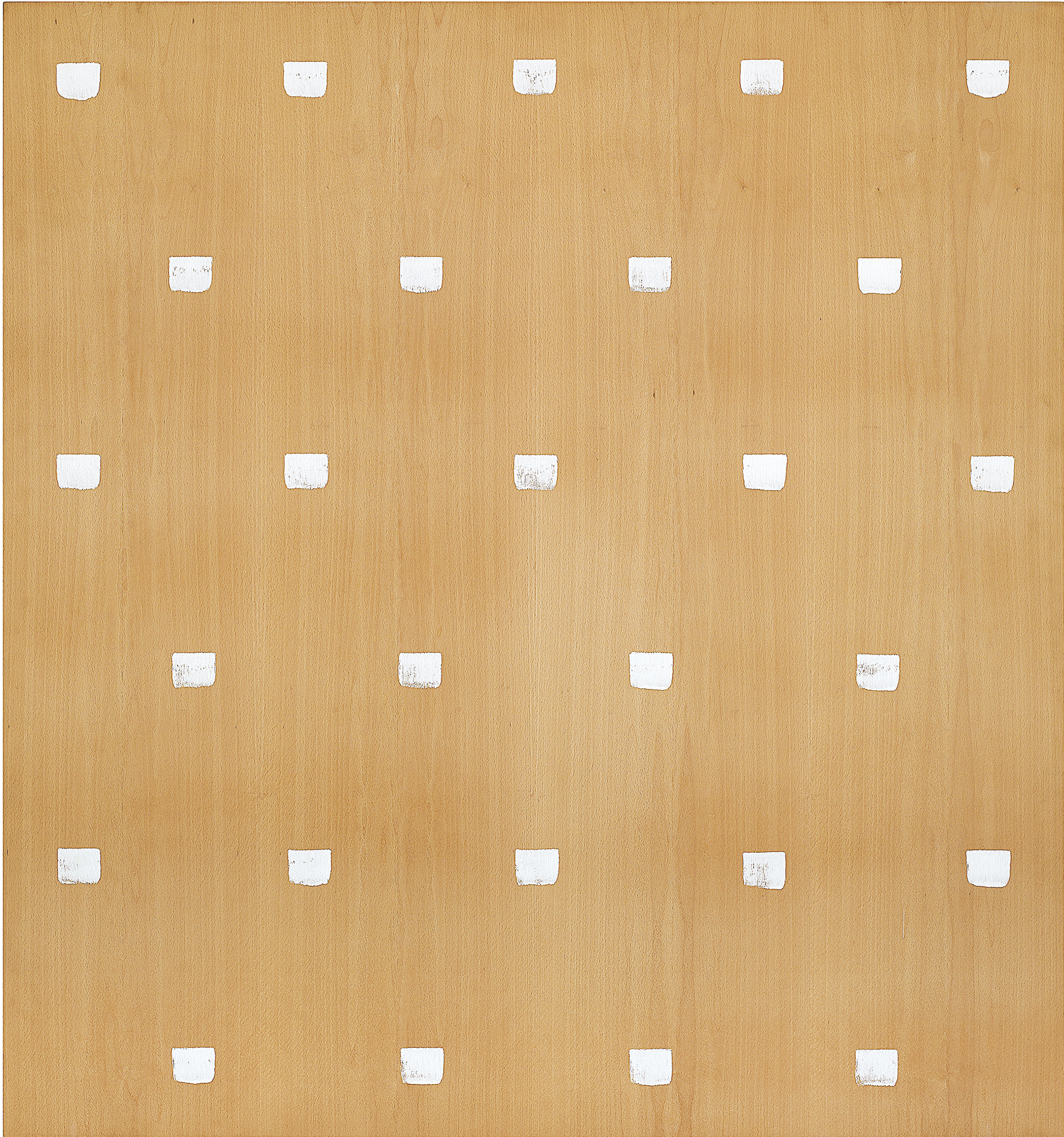Niele Toroni is among the artists who, from the 1960s and throughout the last decades, have attempted to redefine art, its limits, its goals and its essence. He settled in Paris in 1959 and made the most of the subversive spirit that swept through the city at that time.
In 1966, he was the instigator of the B.M.P.T. group, with painters Daniel Buren, Olivier Mosset and Michel Parmentier, whose brief existence came to an end in 1967. Its founders became the anonymous actors of a collective strategy that would enter art history. Brought together by a shared rejection of the painting then dominating the art scene, they decided to circumvent the notions of originality and artistic paternity, understood to be the guarantees of a work’s authenticity, through the development of a minimal, unchanging procedure which came in a variety of unsigned and interchangeable works.
Each artist asserted the repetition of the same chosen motif: paint-brush stroke for Toroni, black circle for Mosset, awning stripe for Buren and horizontal stripes for Parmentier. They presented their work at the Salon de la Jeune Peinture during the Cinquième Biennale de Paris in 1967. Among his acolytes, Toroni is the only one who has pursued the exploration of the same procedure in a continuous way and is also the only one who has remained absolutely faithful to his initial method. Throughout the years, he has travelled the world, from Japan to the United States, from Germany to Korea, tirelessly repeating the same scenario, all the while renewing the link between the artwork and its context of visibility.
He has participated in several art fairs and biennales, and exhibited in France, Switzerland, Germany and Italy. After receiving the Grand Prix national de peinture en France, in 1995, he was the recipient of the 2012 Meret Oppenheim Prize, awarded by the Swiss Federal Office of Culture. He lives and works in Paris.
In 1966, he was the instigator of the B.M.P.T. group, with painters Daniel Buren, Olivier Mosset and Michel Parmentier, whose brief existence came to an end in 1967. Its founders became the anonymous actors of a collective strategy that would enter art history. Brought together by a shared rejection of the painting then dominating the art scene, they decided to circumvent the notions of originality and artistic paternity, understood to be the guarantees of a work’s authenticity, through the development of a minimal, unchanging procedure which came in a variety of unsigned and interchangeable works.
Each artist asserted the repetition of the same chosen motif: paint-brush stroke for Toroni, black circle for Mosset, awning stripe for Buren and horizontal stripes for Parmentier. They presented their work at the Salon de la Jeune Peinture during the Cinquième Biennale de Paris in 1967. Among his acolytes, Toroni is the only one who has pursued the exploration of the same procedure in a continuous way and is also the only one who has remained absolutely faithful to his initial method. Throughout the years, he has travelled the world, from Japan to the United States, from Germany to Korea, tirelessly repeating the same scenario, all the while renewing the link between the artwork and its context of visibility.
He has participated in several art fairs and biennales, and exhibited in France, Switzerland, Germany and Italy. After receiving the Grand Prix national de peinture en France, in 1995, he was the recipient of the 2012 Meret Oppenheim Prize, awarded by the Swiss Federal Office of Culture. He lives and works in Paris.



